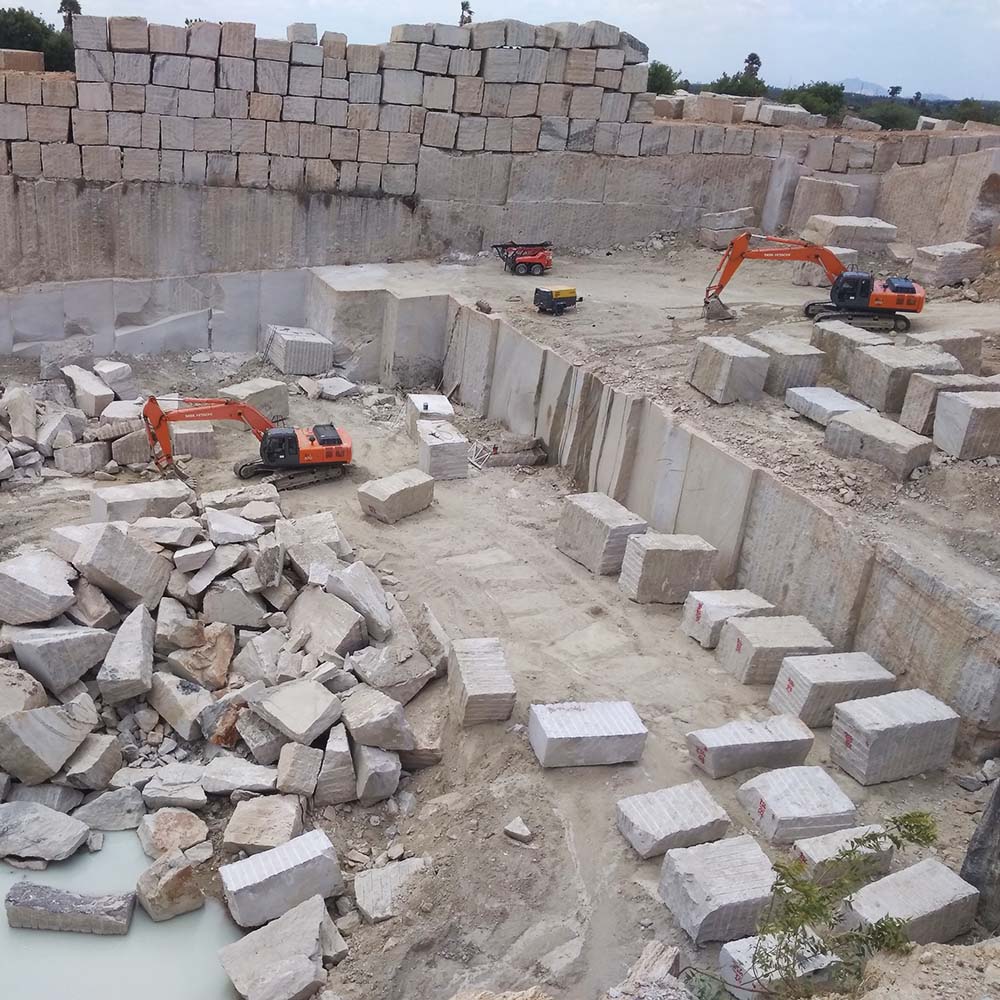Discovering the Rich Background and Lasting Practices of Granite Quarrying
As we depend on the precipice of discovering the complex tapestry of granite quarrying, a journey via time exposes not simply the physical act of removing stone but also the social and historical relevance woven right into the extremely textile of this practice. From the ancient beginnings that laid the foundation for contemporary quarrying strategies to the sustainable practices that are forming the future of this sector, each chisel mark on granite surfaces informs a tale waiting to be uncovered (granite quarries in south africa). The legacy of granite quarrying stretches much past plain extraction; it is a testament to human ingenuity, durability, and the long-lasting attraction of this marvelous rock
Old Origins of Granite Quarrying
Dating back to ancient people, the technique of quarrying granite has actually been an integral part of human history and architectural improvement. The earliest proof of granite quarrying go back to old Egypt, where substantial pyramids and intricate sculptures were crafted from this resilient stone. The Egyptians used primitive tools to draw out granite blocks from quarries, showcasing the significance of this material in their significant buildings.
Moving on in background, the Greeks additionally made substantial payments to the quarrying of granite. The Greeks made use of granite in numerous building marvels, such as holy places and statues, demonstrating their ability in shaping and sculpting this durable stone. The Romans even more refined the techniques of quarrying granite, employing advanced tools like knives and hammers to remove and form granite for their famous structures.
With the centuries, the practice of quarrying granite has evolved, with modern-day innovations improving effectiveness while maintaining the classic allure of this all-natural stone - granite quarries in south africa. From ancient human beings to modern home builders, the tradition of granite quarrying remains to form our globe
Development of Quarrying Techniques
The development of quarrying strategies has been noted by a continuous development towards higher performance and precision in removing granite. Early quarrying techniques included hand-operated labor with basic devices such as blades, hammers, and wedges to draw out granite blocks from the planet.
Improvements in computer-controlled tools and 3D modeling have actually enhanced quarrying procedures, leading to minimal ecological influence and enhanced sustainability practices. As the demand for granite proceeds to rise, the evolution of quarrying techniques stays important to meeting sector needs efficiently and sustainably.
Cultural Relevance of Granite
Granite holds a profound social value throughout different human beings due to its enduring existence in architectural work of arts and respected monuments. The cultural importance of granite extends beyond its physical qualities; it embodies strength, security, and timelessness, making it a symbol of sustaining traditions and traditions.

Sustainable Practices in Quarrying
Amidst the rich history of granite quarrying and its social importance exists a growing focus on sustainable practices within the market. As environmental site link recognition and concerns about source depletion have actually increased around the world, the quarrying sector has significantly embraced lasting techniques to decrease its influence on the atmosphere and bordering communities.

In addition, reclamation and rehab of quarry sites post-extraction are important her comment is here to sustainable methods. By bring back quarried locations to an all-natural or valuable state, such as producing wildlife environments or recreational areas, quarriers can counter the ecological footprint of their procedures news and contribute positively to the neighborhood ecological community.
Legacy of Granite Quarrying
With a historical background steeped in craftsmanship and industrial development, what enduring effect has granite quarrying left on the landscape of contemporary society? The tradition of granite quarrying transcends mere extraction practices; it has shaped building marvels, metropolitan landscapes, and social heritage worldwide. The durable nature of granite has made it a preferred selection for monuments, buildings, and infrastructure, standing as a testament to the skill and artistry of quarry workers throughout generations.
In addition, the financial footprint of granite quarrying can not be forgotten. The market remains to offer employment possibility and drive regional economic climates in areas where granite removal is prevalent. It has actually additionally spurred technological improvements in quarrying methods and devices, bring about a lot more reliable and sustainable methods.
In terms of sustainability, the heritage of granite quarrying consists of efforts to reduce environmental effects with recovery projects and liable resource management. By stabilizing financial passions with ecological stewardship, the sector aims to guarantee that future generations can proceed to take advantage of this long-lasting natural deposit.
Final Thought
